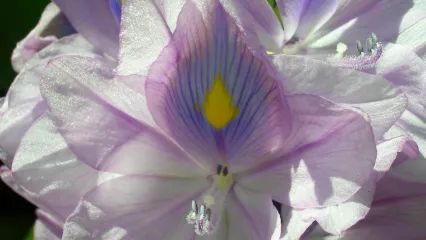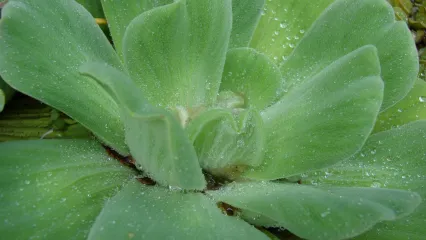
Description
Water Hyacinth is native to South America and was introduced to the United States in 1884 at the Cotton States Exposition in New Orleans, Louisiana. Since then, it has spread to more than half of the states.
Has been observed in Lake Eufaula and several small Oklahoma City lakes.
Impacts
Water Hyacinths can form dense colonies, which can lower light penetration and dissolved oxygen level. Decreased light and dissolved oxygen can alter native vegetation and fish communities in the area. It can also impede boat traffic and clog irrigation canals and intake pumps. Water hyacinth is easily spread by fragmentation and offshoots of the branching stems that are carried by boat, trailer, and other gear.
Identification Keys
- Flowers are 6-petaled, the central lobe has a yellow oval-shaped spot surrounded by dark blue
- Peak flowering occurs in late summer and early fall
- Leaves are thick, shiny, bright green, and concave or kidney-shaped.
- Roots are short, feathery, and black to purple in color
- Can be up to 1 meter in height
How To Observe
If you think you have discovered any invasive species contact us at (918) 200-4815 or report online.


